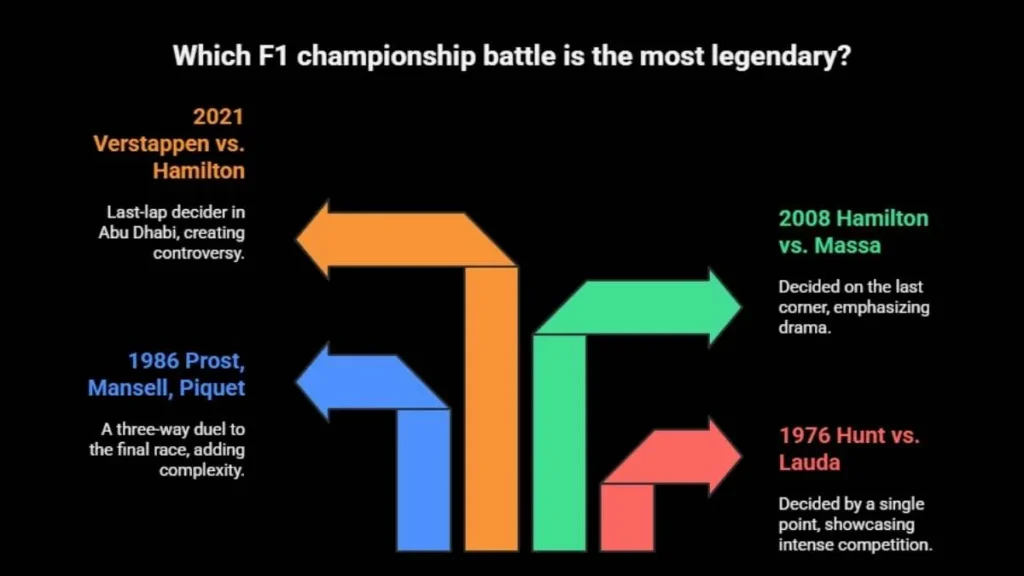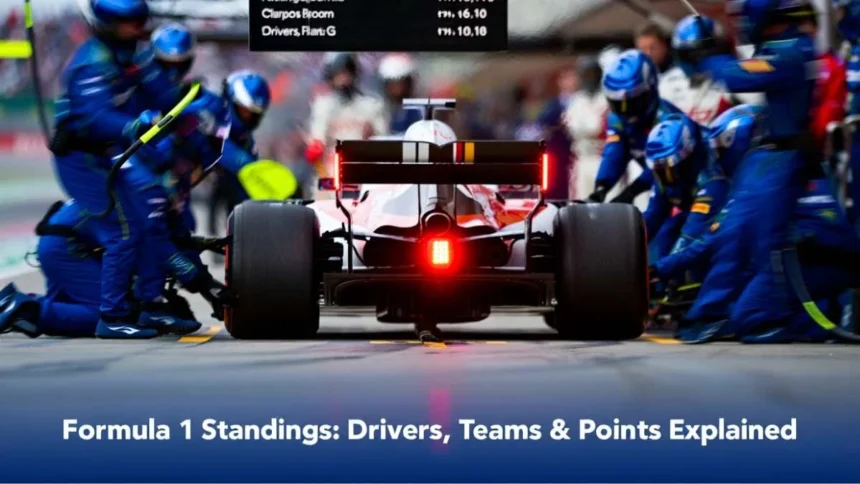The Formula 1 Standings are the official ranking tables that determine the performance and positions of both drivers and teams throughout each Formula 1 season. They are updated after every race and reflect how consistent and competitive each participant has been across the calendar year.
- Understanding How Formula 1 Standings Work
- Evolution of the Points System
- The Formula 1 Points System at a Glance
- The Drivers’ Championship Explained
- The Constructors’ Championship Overview
- How Standings Influence Team and Driver Strategies
- Real-Time Analytics and Data in Modern F1
- Legendary Championship Battles in F1 History
- Why Formula 1 Standings Matter Beyond Racing
- Quick FAQs
- Conclusion
In simpler terms, Formula 1 Standings show how many points drivers and constructors earn based on their results. The rankings are divided into two sections: the Drivers’ Championship, focusing on individual drivers, and the Constructors’ Championship, which tracks the total performance of each team. Understanding these standings is key to following how champions are crowned and how the entire season unfolds.
Understanding How Formula 1 Standings Work
Formula 1 Standings are managed by the Fédération Internationale de l’Automobile (FIA) and updated after each Grand Prix. These standings summarize a season-long points system that rewards consistency, speed, and strategy.

Each race contributes to a driver’s and team’s cumulative total. The higher a driver finishes, the more points they earn. The structure rewards not only race winners but also the most consistent performers across the season.
The two core elements that define Formula 1 Standings are:
- Drivers’ Championship: Focused on individual racers.
- Constructors’ Championship: Based on total points earned by both drivers representing each team.
Evolution of the Points System
Over the decades, the Formula 1 points system has evolved to keep the competition balanced and exciting. In the 1950s, race winners earned 8 points, with a bonus for the fastest lap. By the 1960s through the 1980s, first place was worth 9 points, rewarding consistency across races. In the 1990s and early 2000s, 10 points became the standard for victory, before expanding to reward the top eight finishers. Since 2010, Formula 1 has used the modern 25-point system, extending scoring to the top ten drivers.
The Formula 1 Points System at a Glance
| Position | Points Awarded | Additional Notes |
| 1st | 25 | Maximum points for race victory |
| 2nd | 18 | Strong finish with high consistency |
| 3rd | 15 | Reward for podium placement |
| 4th–10th | 12–1 | Gradual reduction for the top ten |
| Fastest Lap | +1 | Only if within the top ten finishers |
| Sprint Race Winner | 8 | Shorter format race on select weekends |
The Drivers’ Championship Explained
The Drivers’ Championship is the ultimate individual honor in Formula 1, celebrating consistency, precision, and peak performance. Drivers earn points based on their race finishes, with additional points for fastest laps and sprint races. In case of a tie, the number of wins and podiums determines the final position.
The Constructors’ Championship Overview
The Constructors’ Championship honors the technical brilliance and teamwork behind Formula 1 success. Each team fields two cars, and the combined points from both drivers determine their place in the standings. Winning this title reflects engineering innovation, strategic execution, and flawless coordination between drivers and crew.
How Standings Influence Team and Driver Strategies
The Formula 1 Standings drive much of the strategic behavior within the sport. They directly affect how teams plan, execute, and adapt throughout the season.
- Team Orders: Teams may prioritize one driver if that driver is higher in the standings.
- Development Choices: Engineers focus upgrades on the car with better championship potential.
- Financial Impact: Prize money distribution depends on the final constructor positions.
- Driver Psychology: Drivers often balance risk-taking with consistency to protect their standing.
Real-Time Analytics and Data in Modern F1
Today, Formula 1 uses AI-driven analytics and real-time telemetry to track driver performance and update standings in real time. Technological Advancements Include:
- Live race tracking dashboard
- Predictive modeling for staging outcomes
- Real-time pit strategy optimization
- Global fan access through digital platforms
Legendary Championship Battles in F1 History
Throughout its history, Formula 1 Standings have witnessed unforgettable rivalries:
- 1976: James Hunt vs. Niki Lauda decided by one point.
- 1986: Prost, Mansell, and Piquet’s three-way duel to the final race.
- 2008: Hamilton vs. Massa championship decided on the last corner.
- 2021: Verstappen vs. Hamilton: last-lap decider in Abu Dhabi.

Why Formula 1 Standings Matter Beyond Racing
The importance of Formula 1 Standings extends far beyond the racetrack, influencing business, technology, and global fan engagement. Teams that finish higher attract more sponsors, funding, and brand recognition, while drivers with strong rankings secure better contracts and career opportunities. These standings also drive innovation, as top-performing teams reinvest their earnings into advanced engineering and research to maintain competitiveness. For fans, standings create a continuous narrative that fuels excitement and loyalty throughout the season, making Formula 1 not just a sport but a dynamic ecosystem where performance, prestige, and progress are constantly intertwined.
Quick FAQs
1. How often are Formula 1 Standings updated?
After every race weekend, including sprints and main races.
2. Can a driver win the championship before the final race?
Yes, if their points lead becomes mathematically unbeatable.
3. Do teams earn money based on their standings?
Yes, prize funds are distributed according to the final Constructors’ Championship order.
Conclusion
The Formula 1 Standings are the definitive measure of success in the world’s most elite motorsport. They reflect every race result, every strategic call, and every moment of brilliance across the season.
By tracking how drivers and teams accumulate points, fans gain insight into the unfolding drama that defines Formula 1. From the first lap in Bahrain to the final sprint in Abu Dhabi, the standings reveal who truly conquered the season through skill, teamwork, and consistency.






